Publishers were met with a lot of changes in 2019. There were endless Google Core Algorithm updates and preparation for new privacy regulations like the CCPA. On top of that, publishers had to create new content, grow quality traffic, and attempt to increase revenues. Despite these challenges, many publishers want to know how to increase AdSense revenue in 2020.
Ad rates as a whole were lower in 2019 than in 2018. The Ad Revenue Index shows that the peak of ad rates—Black Friday—did not hit the same peak as it did in 2018.
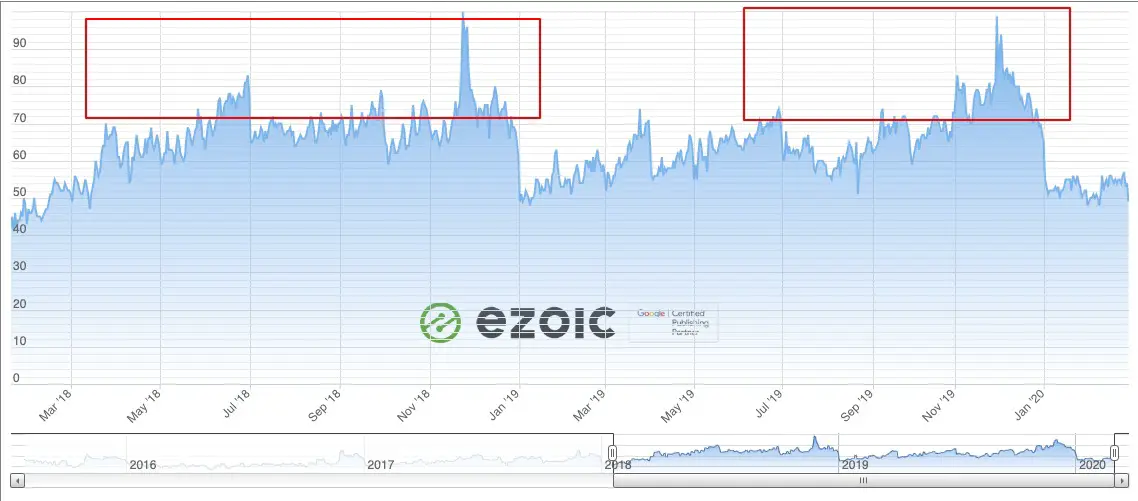
Even with lower ad rates, our 2020 Publisher Performance Report showed 300 publishers that increased both traffic and revenue in 2019.

So how did these publishers grow their RPM, total revenue, traffic, and engagement metrics? Today I’m going to take you through 5 ways to increase AdSense revenue for your website in 2020.
1. Write more content
One of the most effective ways to increase AdSense revenue in 2020 is to write more content.
There’s no secret that websites that produce the most content grow more quickly than sites that produce less. This is why serial site builders tend to outsource their content writing to help scale site growth over time.
The data from the performance report showed that the 10 websites with the highest revenue growth wrote an average of 87 blogs. In contrast, the 10 websites that had the least amount of revenue growth wrote an average of 25 pieces of content in 2019.

Additionally, our top digital content trends survey found that 71.9% of publishers said writing long-form content was the most successful tactic for their website growth in 2019. Many publishers can relate to this tactic being their top priority. But is long-form content the best way to increase AdSense revenue?
In our study on content length, we found that the highest-earning content length was 750-1000 words.
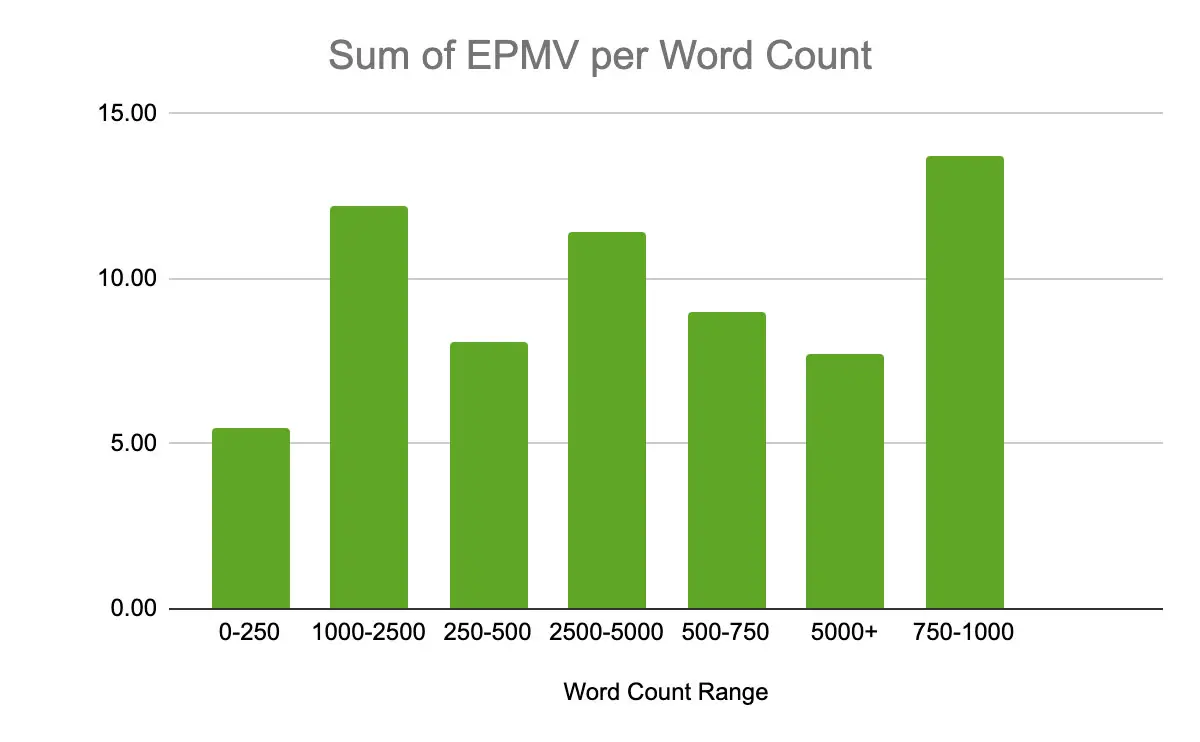
We did see that the two second-highest-earning word count ranges were 1000-2500 words and 2500-5000 words. These word counts are more in line with what most have traditionally said are the optimal content lengths for SEO.
What’s more important is to notice that both the highest and lowest ends of the word count ranges cause earnings to suffer the most. Articles with fewer than 250 words and articles with over 5000 words had the lowest EPMVs.
Publishers using Ezoic’s Big Data Analytics have the benefit of seeing revenue by word count to understand what length earns the most money for their specific audience. They can also see how content length affects engagement metrics like bounce rate and page engaged time.

2. Create more video content
As of January 2020, YouTube is the second-most popular social network on the web. There are over 2 billion users, and over 1 billion hours of video content is consumed on the platform every day.

Outside of creating more long-form content, 45% of publishers surveyed said their biggest priority was to create more video content in 2020. This is a top priority for a good reason.
On top of the massive amount of users on the platform, video consumption as a whole is up 59 percent since 2016.
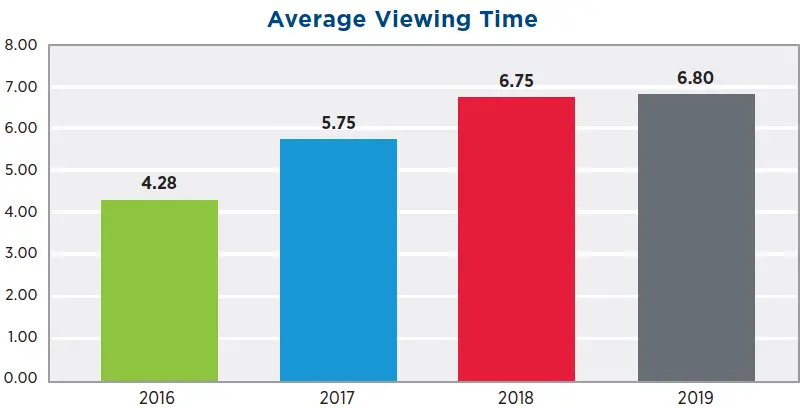
So why should digital publishers care? Because for certain queries being searched on Google, the SERP will have a handful of video results that appear close to the top. Here is an example using the topic keyword of this article: “How to increase AdSense revenue in 2020.”
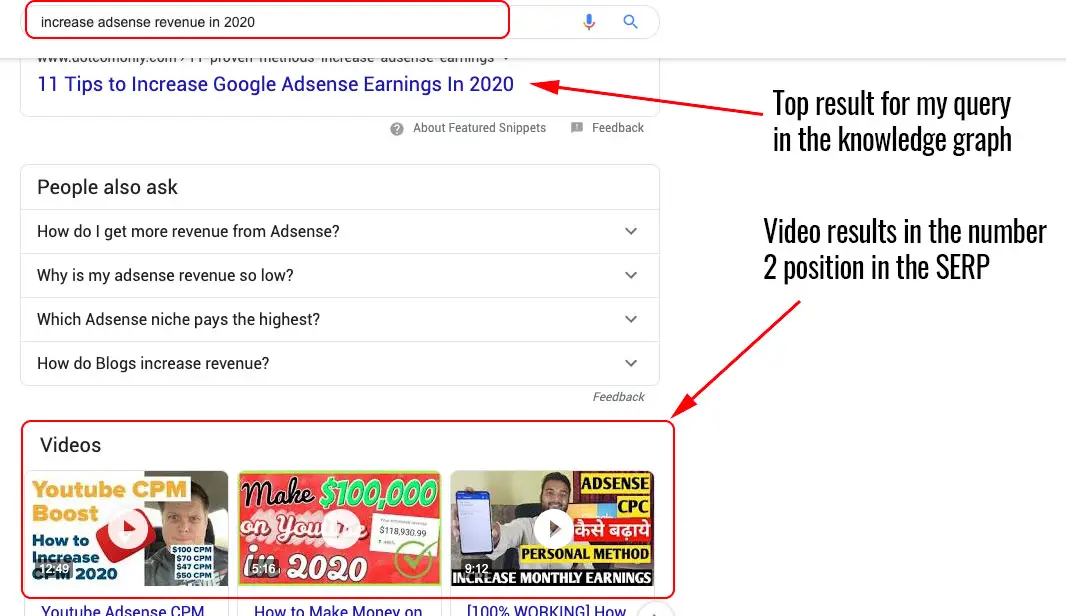
These results can drive traffic to your YouTube channel, but it can also do the same for your website if you natively host your videos. Legally speaking, it would violate antitrust laws if Google gave preference to only YouTube videos in these SERPs.
Natively hosted videos will also appear in these search results, too. This is why if you search breaking news, often you find natively hosted videos from news websites.
Backlinko has a fantastic guide on how to rank YouTube videos, and here are the search terms Google tends to use video results in a SERP:
- How-to keywords
- Reviews
- Tutorials
- Anything fitness or sports-related
- Funny videos
Also, there are studies showing that relevant video content embedded in written content drives more engagement and revenue. If you have no idea where to begin with video content, here’s our guide on how to become a video publisher.
3. Improve engagement metrics to increase AdSense revenue
Most people agree that “good” user experience is where user engagement is high. The visitor is reading content, viewing multiple pages, and sharing the content across social platforms.
Additionally, we’ve known for some time that time on page is positively correlated with earnings.
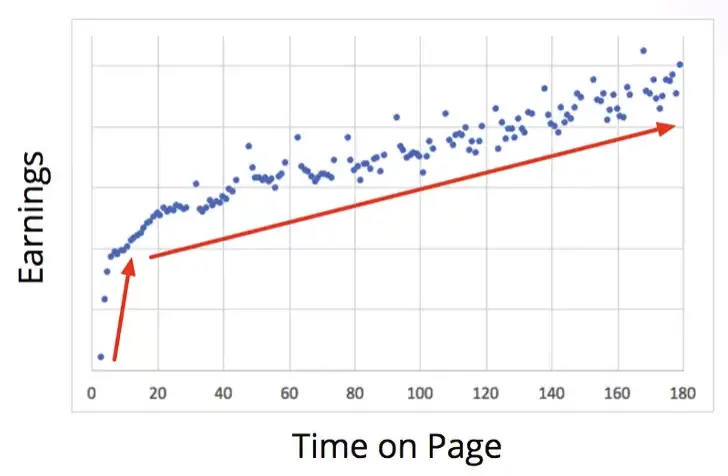
The same is true for page views per visit and other user engagement metrics. In a recent study, we also discovered that certain categories of websites have better engagement metrics than others.
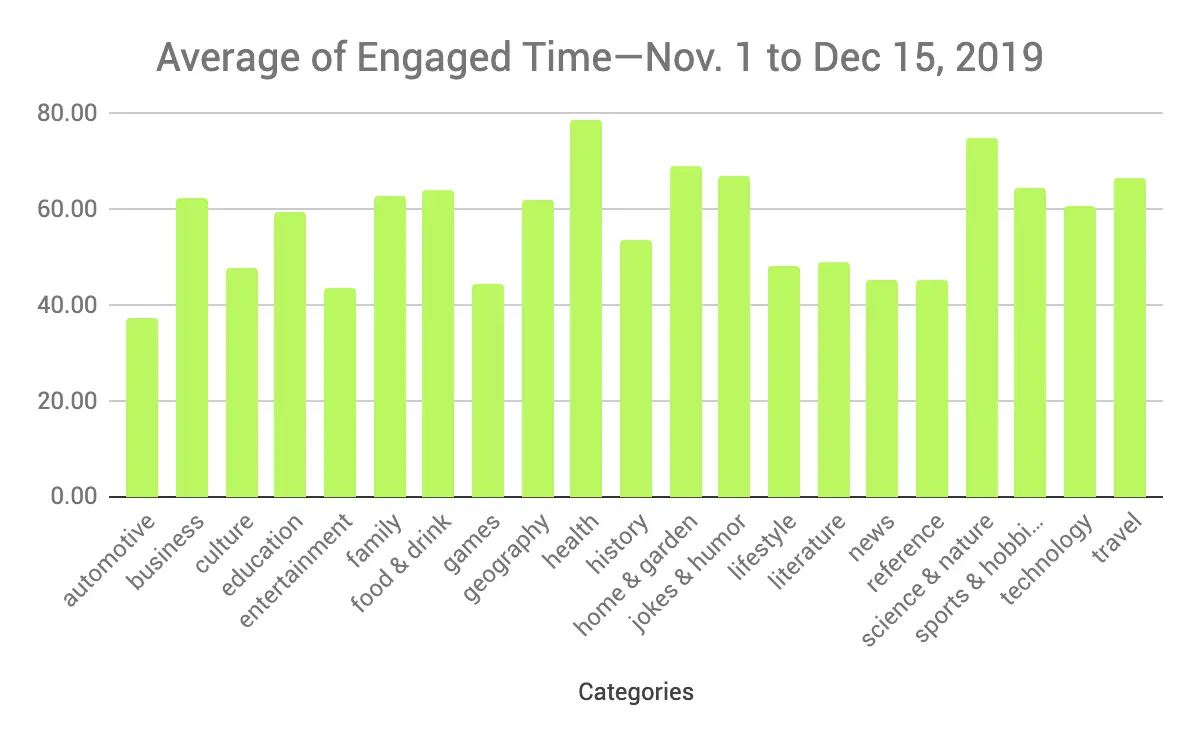
While certain categories of websites earn higher ad rates from advertisers than others, the relationship between website categories, engagement metrics, and ad earnings isn’t as clear. The one category of site that came out on top on all fronts was home & garden. It was the highest-earning website category with the best average engagement metrics.
How can publishers increase engagement metrics on their site? Here are some proven tactics that improve visitor engagement and SEO:
- Writing long-form articles (Additionally, use the inverted pyramid style of writing)
- If you produce unique video content, embed a video that’s relevant within your post
- Strike the right balance of display ads throughout your site
- Write step-by-step “how-to” content that’s relevant to your niche
- Avoid mobile optimization errors on your site
4. Diversify revenue streams
25 percent of publishers surveyed said that diversifying their revenue streams was their highest priority in 2020.

Diversifying revenue streams is becoming an increasingly popular strategy for publishers. Why? Think of growing your website like investing in the stock market. Investing in many different stocks (like an index fund) is far less risky and volatile compared to investing all your money into a single stock.
Some publishers are afraid of display ads affecting their affiliate revenue, or vice versa. In reality, most affiliate sites earn more money from adding display ads than the little they lose in affiliate income.
Serial affiliate website builder Ben Adler has found great success in diversifying his revenue streams. After a year, display ads didn’t affect his affiliate income. His traffic and affiliate income stayed the same, but he just made more total revenue with ads. The benefit of getting more into ads is if you have evergreen content on your site, you could have that information on your site for 5 years and it will never go out of date.
Here are some ways you can diversify your revenue streams in 2020:
- Sponsored/branded content
- Product sales
- Direct deals
- Subscription-based or donation-based models
5. Grow the value of your ad inventory
Growing the value of your ad inventory refers to increasing the monetary value of the physical ad space available on your website to advertisers.
How do publishers accomplish this? There are many strategies people use:
- A/B testing: Are 6 ads on a page better for UX, or is it 7? Let’s say 60% of people prefer layout A with 6 ads, but 40% preferred layout B with 7 ads. If you choose the option preferred by the majority, you’re now losing out on the 40% of the audience that preferred something different.
- Ad-ops shops/third-party monetization: These players jam a lot of ads on the page to gain a higher total eCPM (total price paid for all the ads on a page). This may earn you more money in the short term, but in the long term, ad dilution happens. Additionally, more ads on the page may cause visitors to visit fewer pages, leading to lower ad revenues.
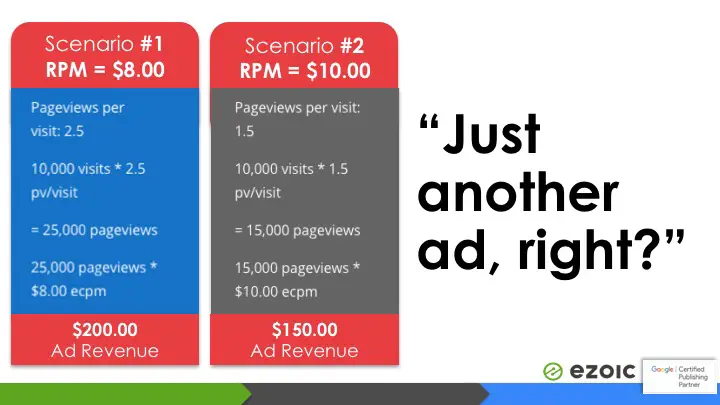
Furthermore, some ads can decrease in value and cause your entire site to make less money over time. Why? Advertisers don’t want to pay for ads that people are not engaging with.
The reason behind this is that all visitors to a site behave differently. At Ezoic, we’ve learned some of the visitor behavior and ad attributes that affect the impact of ads on user experience are:
- Time of day they visit
- Day of the week they visit
- Traffic source
- Device type
- Scroll depth
- Geographic location
- Ad color
- Size of the ads
- Ad type
- Location of the ads
- Number of ads per page

So, how do publishers try to optimize their ad inventory around all these shifting variables of visitor behavior?
Multivariate testing is the best way to increase AdSense revenue in 2020
It would take publishers that have a large team of people months or even years to test all the visitor behavior and ad attributes I mentioned above. If you monetize with programmatic ads, the two main competing goals are UX and ad revenue.
The only way to shrink the gap between these two competing goals over time is by continual multivariate testing on a per-user, per visit basis. Ezoic’s software uses real machine learning to grow revenues and improve user experience over time.
Do you have any questions on any of these tactics? Let me know in the comments.


